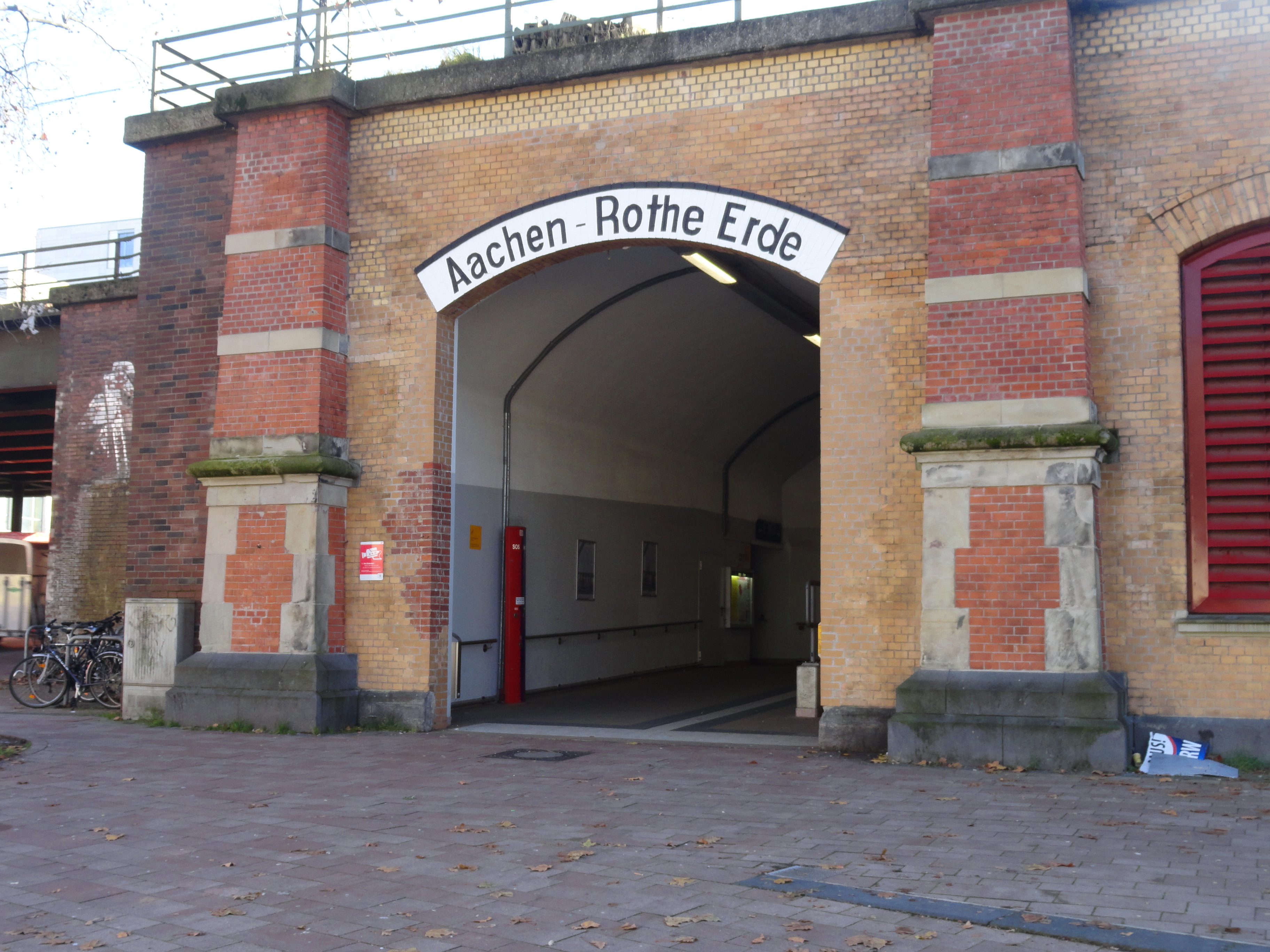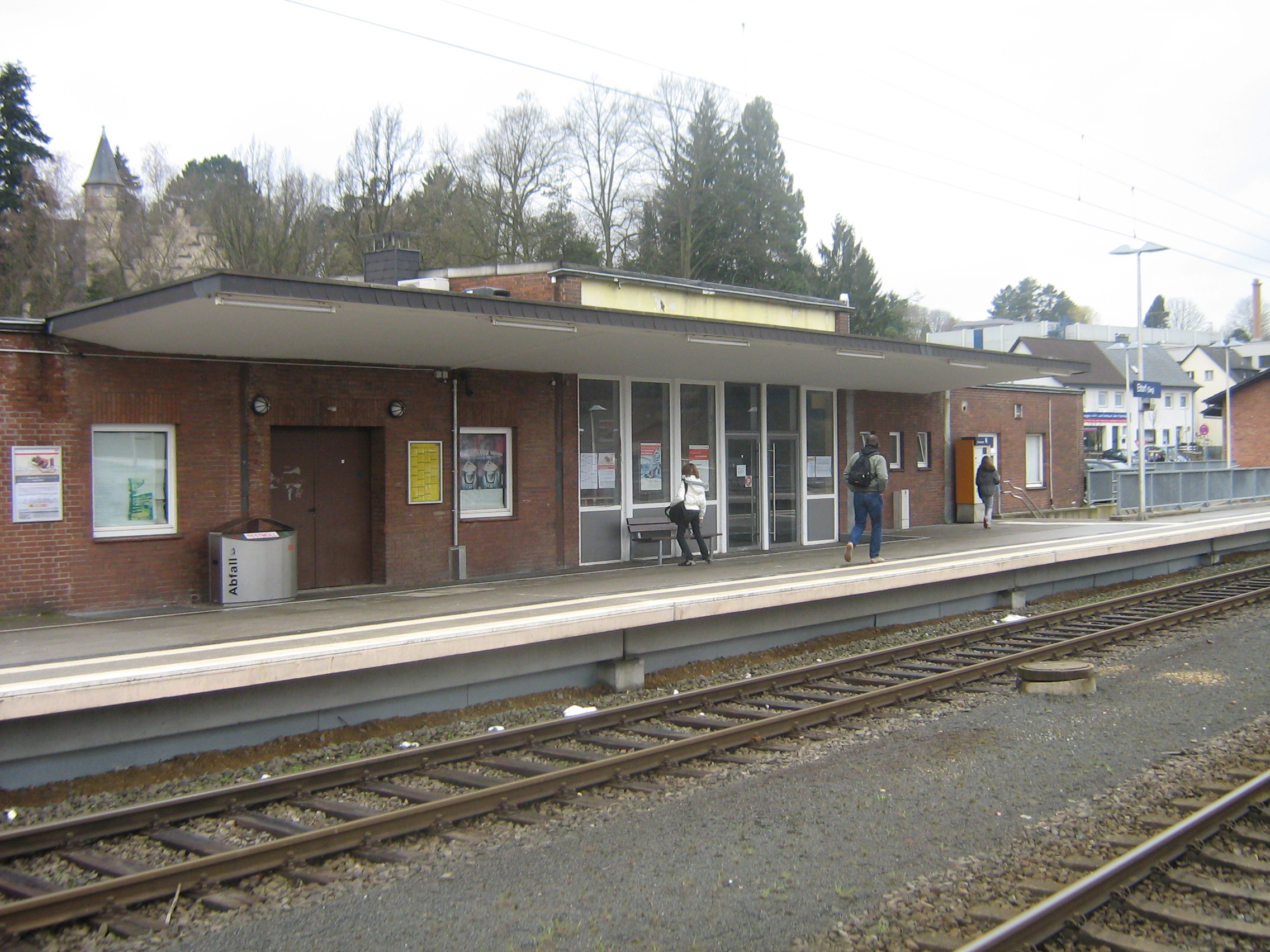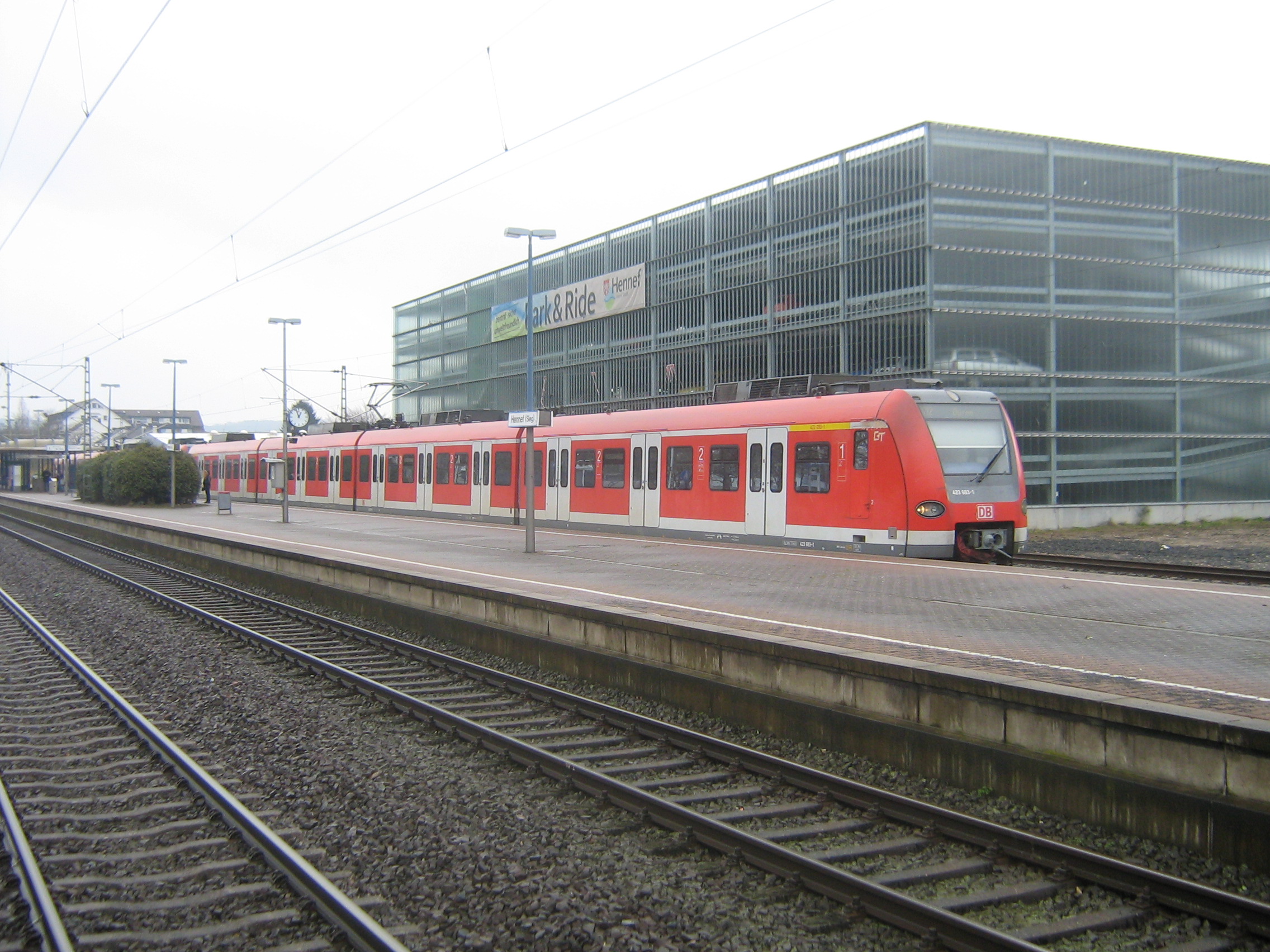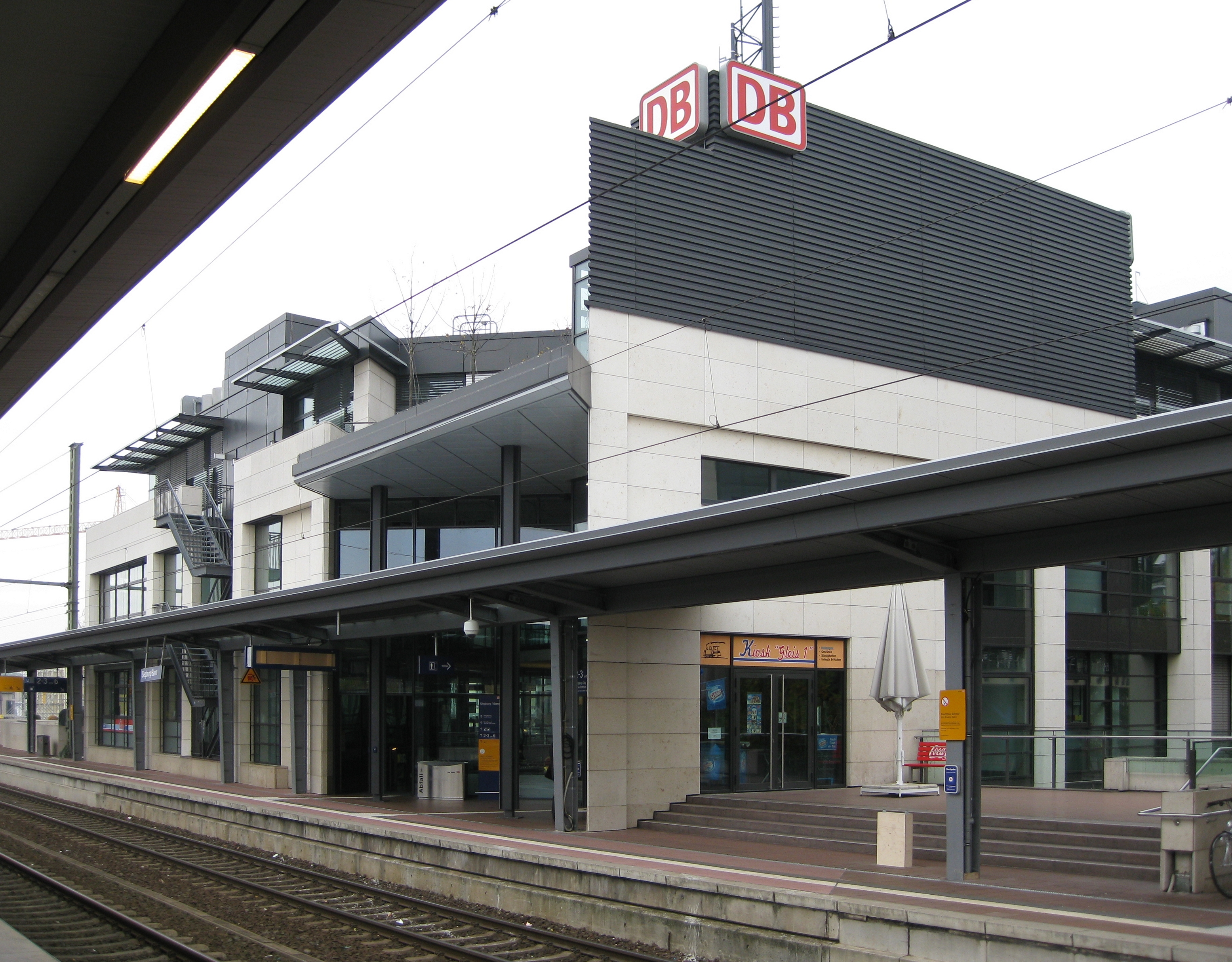|
Rhein-Sieg-Express
The Rhein-Sieg-Express is a Regional-Express service in the German state of North Rhine-Westphalia and Rhineland-Palatinate running from Aachen via Düren, Cologne, Troisdorf, Siegburg and Betzdorf to Siegen. It is operated by DB Regio NRW. History Regional Express (RE) line 9 has existed since the introduction of the integrated timetable (german: integralen Taktfahrplan, ITF) in North Rhine-Westphalia in 1998. Previously one train ran each day over the line to Mönchengladbach from Gießen to Kaldenkirchen. From 1998 the train service ran on the route from Krefeld via Neuss, Cologne, Siegburg and Siegen to Gießen. The service used old rolling stock, consisting of class 111 locomotives hauling five double-deck carriages. At the introduction of the next stage of the integrated timetable (ITF2) in December 2002, the line was the most vulnerable to delay in North Rhine-Westphalia. The causes of these delays were the single track sections of the Sieg Railway, work in connection wit ... [...More Info...] [...Related Items...] OR: [Wikipedia] [Google] [Baidu] |
Betzdorf (Sieg) Station
Betzdorf (Sieg) station is in the town of Betzdorf, Germany, Betzdorf in the German state of Rhineland-Palatinate. It is on the Sieg Railway (''Siegstrecke'') and is the starting point of the Betzdorf–Haiger railway to Haiger station, Haiger/Dillenburg station, Dillenburg and the to Daaden. History The construction of the station began with the construction of the Deutz–Gießen railway, Köln-Deutz–Gießen railway and the Sieg Railway, branch line from Betzdorf to Siegen on 10 January 1861. As a result of the construction of the two lines, Betzdorf became a railway junction and railway town. It had a marshalling yard to serve the surrounding iron ore mines and it grew rapidly. Its importance as a railway junction meant that the town and station suffered severe air raids during the Second World War, resulting in two thirds of the town being destroyed by bombing. In one raid, on 12 March 1945, 61 people were killed. This attack was carried out by the Eighth Air Force, US Eig ... [...More Info...] [...Related Items...] OR: [Wikipedia] [Google] [Baidu] |
Aachen-Rothe Erde Station
Aachen-Rothe Erde station is a station in the German state of North Rhine-Westphalia on the Cologne–Aachen high-speed railway. It is located in the eastern Aachen district of Rothe Erde near the districts of Frankenberg, Forst and Ostviertel. It is classified by Deutsche Bahn as a category 4 station. History With the opening of the Haaren–Aachen-Rothe Erde railway on 31 December 1875, the station was also opened by the Aachen Industrial Railway Company (''Aachener Industriebahn'') under the name of ''Rothe Erde''. Especially after Adolph Kirdorf accelerated the expansion of the ''Aachener Hütten-Aktien-Vereins Rothe Erde'' (Aachen Iron Works-Rothe Erde Association), the station served initially as a transfer station to the tracks connecting here to various factories in Rothe Erde. As the station was originally only used for freight, it was used for connections to the coal mines in neighbouring Belgium, the northern part of the Aachen district and the quarries in Stolberg. ... [...More Info...] [...Related Items...] OR: [Wikipedia] [Google] [Baidu] |
Siegen Station
Siegen Hauptbahnhof is the main station of the town of Siegen, in the German state of North Rhine-Westphalia. It is in close to the modern centre of Siegen, which includes the bus station and the Sieg Carré and City Galerie shopping centres. History The station was opened on 10 January 1861 simultaneously with the opening of the branch line from Siegen to Betzdorf, Germany, Betzdorf, now part of the Sieg Railway. The Altena–Siegen section of the Ruhr–Sieg railway, Ruhr–Sieg line was opened in August 1861. Jews were deported from Siegen station from 1942 to 1944. This is recalled on a plaque on track 3. Services Today the station has six platform tracks. Track 1 (a dock platform) and track 2 are next to the main station building. The other four tracks are located on the island platform, a through platform and a terminating platform on each side of the platform. Platforms are 38 cm high and the maximum usable length of platforms varies from 118 to 344 m. The station ... [...More Info...] [...Related Items...] OR: [Wikipedia] [Google] [Baidu] |
Au (Sieg) Station
Au (Sieg) station is a railway junction in the town of Au in the municipality of Windeck, which is in the German state of North Rhine-Westphalia. It lies on the Sieg Railway to Siegen, where the Engers–Au railway branches off to Altenkirchen, where it connects with the Upper Westerwald Railway (''Oberwesterwaldbahn''). Despite the town’s small population, the junction station is important for commuters from the districts of Altenkirchen, Neuwied and Westerwaldkreis for its connections towards Siegen, Cologne, Bonn, Düsseldorf and Aachen. History Au station was opened in August 1860 as part of the Deutz–Gießen railway by the Cologne-Minden Railway Company (''Cöln-Mindener Eisenbahn-Gesellschaft''). The Engers–Au railway (''Oberwesterwaldbahn'', Upper Westerwald Railway) to Altenkirchen was opened in May 1887, connecting to Engers. Thus, it became a railway junction with an enlarged track layout. Since 2 June 1991, Au station has been the terminus of Cologne S- ... [...More Info...] [...Related Items...] OR: [Wikipedia] [Google] [Baidu] |
Eschweiler Hauptbahnhof
Eschweiler Hauptbahnhof is the largest station in the city of Eschweiler in the German state of North Rhine-Westphalia. It is on a slight curve on the Cologne–Aachen high-speed line. Regional services of the Regional-Express lines RE 1 (NRW-Express) and RE 9 (Rhein-Sieg-Express) stop at the station every half hour in both directions. The station is located about from the city centre in the district of Röthgen. The station is less than from the Ichenberg Tunnel. About away is Eschweiler-West station on the remaining section of the Mönchengladbach–Stolberg railway, which is now served by euregiobahn trains. On 24 March 1987, the former station toilets block together with the former petroleum facility was added to the heritage list of the town of Eschweiler. History On 1 April 1841 a mail service was established between Eschweiler and Stolberg with ran at 7 AM and 7 PM daily. Eschweiler was at the beginning of an expansion of its coal mining industry, stimulated by i ... [...More Info...] [...Related Items...] OR: [Wikipedia] [Google] [Baidu] |
Langerwehe Station
Langerwehe station is a station in the German state of North Rhine-Westphalia on the Cologne–Aachen high-speed railway. It is in the centre of Langerwehe in the district of Düren, about 25 km east of Aachen. History The station was built in 1841 to coincide with the completion of the railway from Cologne to Aachen. The two-story central section of the station building dates from this period. Since the line originally served particularly freight traffic between the Belgian city of Antwerp and the Rhineland, a freight house was also established, which was partly used for the temporary storage of wood for the nearby coal mines of the Aachen district. With the growing importance of passenger services at the end of the 19th century patronage of Langerwehe station increased strongly. At the beginning of the 20th century, the station was therefore significantly expanded, with a two-story extension added to the station building. The freight house became disused and was later ... [...More Info...] [...Related Items...] OR: [Wikipedia] [Google] [Baidu] |
Horrem Station
Horrem station is a station in the Kerpen district of Horrem in the German state of North Rhine-Westphalia. It is a railway junction of the Cologne–Aachen high-speed railway and the Erft Railway (Horrem–Bedburg, connecting with Neuss). The triangular station of Horrem is served by regional services and by S-Bahn trains of the Rhine-Ruhr S-Bahn. Long-distance trains run through on the high-speed line without stopping. It is classified by Deutsche Bahn as a category 3 station. History The station was opened on 6 September 1841 along with the Lövenich–Aachen section of the Cologne–Aachen railway. The station building was demolished in 2012 and completely rebuilt in 2013. The new station building was built as part of a pilot project of Deutsche Bahn’s ''StationGreen XL-Modul'' program, strictly according to ecological principles and equipped with eco-friendly technology. Until 2001, Horrem station had a freight yard to its north. There are commuter parking spaces in th ... [...More Info...] [...Related Items...] OR: [Wikipedia] [Google] [Baidu] |
Köln Messe/Deutz Station
Köln Messe/Deutz station (called ''Köln-Deutz'' until November 2004, Colognian: , ) is an important railway junction for long-distance rail and local services in the Cologne district of Deutz in the German state of North Rhine-Westphalia. It is situated close to the eastern bank of the Rhine and connected via the Hohenzollern Bridge to Köln Hauptbahnhof, the city's main station, which is just a few hundred metres away. The Cologne Trade Fair (german: Koelnmesse) grounds are directly north of the station, hence the ''Messe'' in the station's name. The Stadtbahn station of ''Deutz/Messe'' is nearby and connected by a pedestrian tunnel. The station is a junction station, which has platforms on two levels: the high-level platforms are used by trains running in the east-west direction across the Hohenzollern Bridge to and from Köln Hauptbahnhof. The lower level (''Köln Messe/Deutz tief'') is used by trains running in a north-south direction bypassing the Hauptbahnhof from Köln-M� ... [...More Info...] [...Related Items...] OR: [Wikipedia] [Google] [Baidu] |
Herchen Station
Herchen station is a through station in the town of Windeck in the German state of North Rhine-Westphalia. The station was opened in 1860 on a section of the Sieg Railway, opened by the Cologne-Minden Railway Company (german: Cöln-Mindener Eisenbahn-Gesellschaft, ''CME'') between Eitorf station, Eitorf and Wissen on 1 August 1861. It has two platform tracks and is classified by Deutsche Bahn as a German railway station categories, category 5 station. The station is served by the Rhein-Sieg-Express (RE 9), S12 (Rhine-Ruhr S-Bahn), S-Bahn S 12 services from Köln-Ehrenfeld station, Köln-Ehrenfeld (Horrem station, Horrem in the peak) to Au (Sieg) station, Au (Sieg) and S19 (Rhine-Ruhr S-Bahn), S19 services on weekdays from Düren station, Düren to Herchen or Au (Sieg). The RE 9 and S12 services operate hourly, and the S19 services are less frequent. Notes Railway stations in North Rhine-Westphalia Rhine-Ruhr S-Bahn stations S12 (Rhine-Ruhr S-Bahn) Railway stations in Ge ... [...More Info...] [...Related Items...] OR: [Wikipedia] [Google] [Baidu] |
Eitorf Station
Eitorf station is located on the Sieg Railway in the town of Eitorf in the German state of North Rhine-Westphalia. It was opened in 1859 by the Cologne-Minden Railway Company with the Sieg Railway and served passenger and freight traffic. Station building The original station building opened in 1859 was destroyed in World War II. The current station building was opened by Deutsche Bundesbahn in 1962. The building stood empty for several years and in the meantime could not be used by passengers. Since February 2009, a bakery outlet has occupied the former ticket hall. Next to the station there is a parking station and a parking lot for park and ride commuters. Platforms Until spring 2004, the station had a platform next to the entrance building and a platform between tracks 1 and 2, which could only be reached at ground level over track 1. Therefore, only one train at a time was allowed to stop at Eitorf and to prevent two trains crossing at the station, one train had to wait ... [...More Info...] [...Related Items...] OR: [Wikipedia] [Google] [Baidu] |
Hennef (Sieg) Station
Hennef (Sieg) station is located on the Sieg Railway in the town of Hennef (Sieg) in the German state of North Rhine-Westphalia. It was opened in 1859 for passenger and freight traffic by the Cologne-Minden Railway Company along with the Sieg Railway. Station building The listed building station building was opened in 1859 by the Cologne-Minden Railway Company and has been privately owned since 2004. The station has a Deutsche Bahn ticket counter, a bar and a fast food restaurant. Next to the station there is a parking garage. Platforms The station has a side and a central platform serviced by three tracks for passenger trains. They have lifts and are free of barriers for the disabled. The disused track four has no platform. Train services The station is served by the Rhein-Sieg-Express (RE 9) every hour. In the morning peak hour two extra RE 9 services run to Cologne and in the afternoon peak hour two extra RE 9 services run to Siegen. It is also served by Rhine-Ruhr S-Bahn ... [...More Info...] [...Related Items...] OR: [Wikipedia] [Google] [Baidu] |
Siegburg/Bonn Station
Siegburg/Bonn station, in the town of Siegburg, North Rhine-Westphalia, Germany, is on the Cologne–Frankfurt high-speed rail line and the Sieg Railway. It was rebuilt for the high-speed line and is connected to Bonn by the Siegburg line of the Bonn Stadtbahn. It is in the network area of the Verkehrsverbund Rhein-Sieg (Rhine-Sieg Transport Association). History The original Siegburg station opened in 1859 on the Sieg Railway (german: Siegstrecke). In 1870, Siegburg became the northern end of the East Rhine Railway (''Rechte Rheinstrecke''), with the intention that it would be later extended through the Agger valley through the Ruhr to Bochum or Essen, so that Siegburg would become a significant railway junction. Influential people in Cologne finally prevailed, so instead the East Rhine Railway was extended from Friedrich-Wilhelms-Hütte to Troisdorf in order to connect to Cologne, resulting in the line to Siegburg becoming only a branch line parallel with the Sieg Railway. ... [...More Info...] [...Related Items...] OR: [Wikipedia] [Google] [Baidu] |





